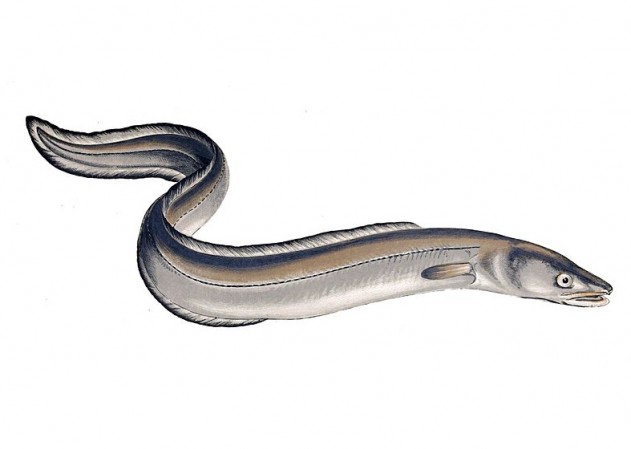Colouration
A wide colour band with shallow water conger living close to sand being a dull matt brown with a pale white or cream belly. Reef conger are steely grey, occasionally with paler patches. Deep water rock dwelling conger are grey to green, some turning almost black. Wreck conger take on a much darker deep grey to light black with very pale grey bellies.
Distribution
Fully distributed around Irish shores. Is also found as far north as Scandinavia and the southern tip of Iceland, southward down the European Coast, and throughout the Mediterranean.
Breeding season
Little is known of the congers breeding habits. The old consensus was that they followed the common eels migratory instincts and traveled to the tropical Atlantic, but this is now doubted. It’s possible adult conger may actually only breed once and this is likely to occur in very deep water off the Irish coast. The larva is transparent and flattened and is carried by surface currents inshore guaranteeing a wide distribution of eels.
Habitat
The conger is an ambush type predator seeking out cover in which to hide and then pounce on passing victims, though it will roam around openly on occasions to flush prey fish. Is found living in rocky holes underneath breakwaters, harbour walls, groynes and sewer outlets. Happy in shallow water over boulders near to the low water line of beaches. Is a common resident on rough ground below steeply rising cliffs and this type of feature.
Diet
Smaller conger take crabs, worms, rock gobies and tiny rockling. Conger over 5lbs take mostly fish, principally pouting, whiting, small codling and pollack over reef ground and from the bases of breakwaters etc.
Conger on rough ground in deep water eat mainly pout, poor cod, large rockling, codling, small ling and even other small conger. Wreck fish follow suit taking the same species, but also octopuses. An adult conger will sit tight and slowly chew it’s way through a prey fish as large as 1/10th its own size, and occasionally larger.
Season
A frequent catch from April through to Christmas, but conger feel the cold and tend to go comatose in colder weather reducing the catch during January to March. Recent mild winters have seen conger catches virtually maintained throughout this period, though!
Tides
Shore based conger show best during neap tides and may feed throughout the tidal run if the neap is at the smaller end of the scale. Larger neaps and middle sized tides tend to see conger concentrate their feeding for a couple of hours either side of slack water, with the fish going to ground during the peak runs.
In most areas, large spring tides see catches down to odd fish, and these feed only for very short periods close to actual slack water. The exception can be when spearfishing a small bay or harbour where the tide flow is deflected and reduced. This liking for slower running tides is based on the feeding patterns of the prey fish. Smaller pout, poor cod, whiting etc, are not active swimmers when the tide is fast flowing, but move about more when the tide is slow and swimming easier.

